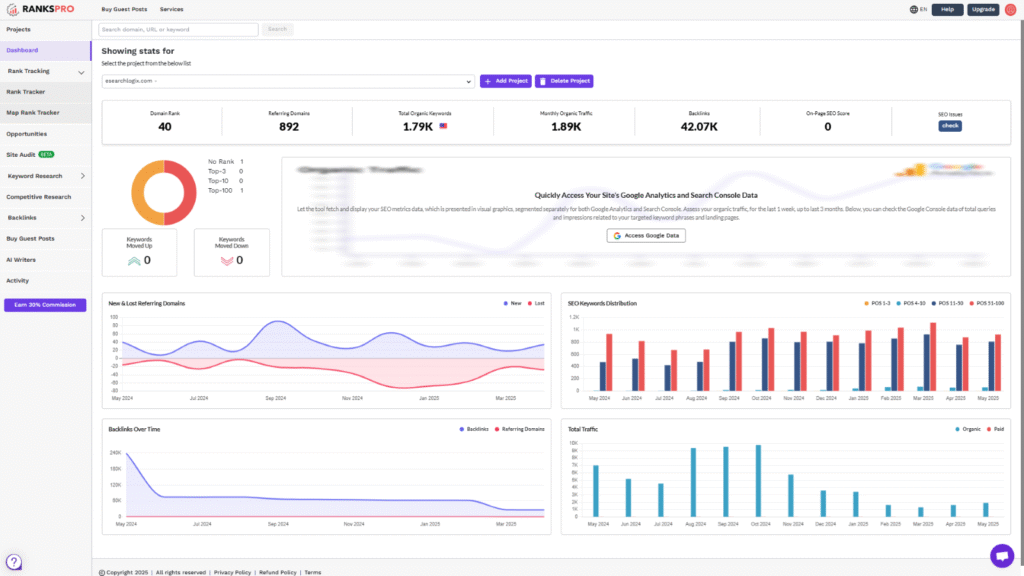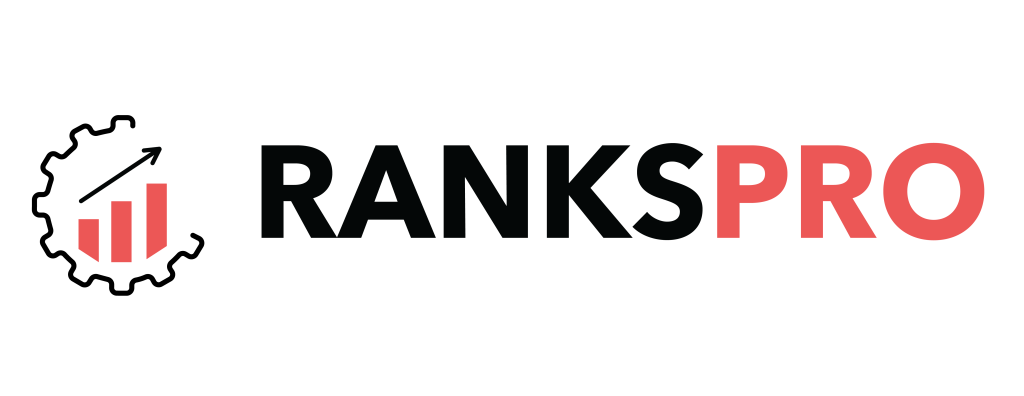In the sprawling digital marketplace of 2025, understanding your website’s visibility is paramount. But visibility isn’t a monolith; it has different contours depending on whether your audience is across the street or the globe.
This is where the critical distinction between global and local Search Engine Optimization (SEO) comes into play, and more importantly, how you track their respective performances. A one-size-fits-all approach to SEO tracking is a recipe for missed opportunities and skewed data.
Whether you’re a multinational corporation aiming for worldwide reach or a neighborhood bakery wanting more foot traffic, a nuanced understanding of global versus local SEO performance tracking is essential for sustainable growth.
This definitive guide will dissect these differences, equip you with the right metrics and tools, and help you navigate the complexities of measuring success in 2025.
Fundamental Differences Between Global SEO and Local SEO
Before diving into tracking, let’s solidify our understanding:
Global SEO
This strategy focuses on optimizing your website and content to rank for broad, often non-geo-specific keywords, targeting a wide audience across multiple countries and languages.
The goal is to achieve visibility and attract users irrespective of their physical location, catering to a diverse international market. Think of e-commerce giants, SaaS companies with a worldwide user base, or large media publications.
Local SEO
This strategy is hyper-focused on improving your website’s visibility in search results for users in a specific geographic area. It targets customers searching for products or services “near me” or within a particular city, region, or even neighborhood.
The primary aim is to drive online users to physical locations or service areas. Think of restaurants, plumbers, dentists, local retail stores, and service-area businesses.
Key Distinctions at a Glance:
| Feature | Global SEO | Local SEO |
| Target Audience | Broad, international, across various regions | Specific, geographically defined, local community |
| Keyword Intent | Often informational, brand-related, broad | Transactional, navigational, “near me,” location-specific |
| Competition | Often higher, against global players | More localized, against nearby businesses |
| Primary Goal | Brand awareness, broad reach, online conversions | Foot traffic, local calls, and local online orders |
Why Separate Global and Local SEO Performance Tracking?
Using the same metrics and tools to gauge the success of global and local SEO campaigns can be misleading and inefficient. Here’s why distinct tracking is vital:
Different Goals, Different Metrics
Global SEO might prioritize overall organic traffic growth across countries, while local SEO will focus on metrics like Google Business Profile (GBP) interactions (calls, direction requests) and Local Pack rankings.
Resource Allocation
Understanding which strategy (and which specific locations or international markets) is performing well helps you allocate your SEO budget and resources more effectively.
Competitive Landscape
Your competitors in a global market are different from your local competitors. Separate tracking allows for more accurate competitive analysis within each sphere.
Varying User Intent
A global search for “best running shoes” has a different intent than a local search for “running shoe store near me.” Tracking must reflect these differing intents to measure true engagement and conversion.

Geo-Specific Nuances
Search engine algorithms, SERP features (like the Local Pack), and user behavior can vary significantly from one country to another, and even from one city to another. Generic tracking misses these vital details.
Algorithm Updates
Google often rolls out updates that specifically impact local search (like changes to the Local Pack algorithm) or how it handles international content (hreflang signal processing). Distinct tracking helps isolate the impact of such updates.
In 2025, with search engines becoming increasingly sophisticated in delivering personalized and context-aware results, the need for precise, segmented tracking is more critical than ever.
Key Performance Indicators (KPIs) for Global SEO
When tracking the performance of your global SEO efforts, focus on these key metrics:
- Organic Traffic by Country/Region: Monitor the volume of organic search traffic originating from your target countries. Look for growth trends in specific international markets.
- International Keyword Rankings: Track rankings for your target non-geo-modified keywords across different search engine versions (e.g., google.co.uk, google.de, google.co.jp).
- Impressions and Click-Through Rate (CTR) by Country: Analyze how often your site appears in search results in different countries and the percentage of users clicking through.
- Conversion Rate by Country/Region: Measure how well organic traffic from different international markets converts into leads, sales, or other desired actions.
- Backlink Profile by Country: Assess the quantity and quality of backlinks originating from websites in your target international markets.
- Hreflang Tag Performance: If you use hreflang tags for different language/region versions of your site, monitor Google Search Console for any errors and ensure the correct versions are being indexed and served.

- Branded vs. Non-Branded Search Volume (Global): Understand the proportion of search traffic coming from users searching for your brand versus generic terms on a global scale.
- Engagement Metrics by Country: Analyze metrics like bounce rate, pages per session, and average session duration for users from different countries to gauge content relevance.
- Crawlability and Indexability of International Pages: Ensure search engines can effectively crawl and index all your international site versions.
Key Performance Indicators (KPIs) for Local SEO
For local SEO, the metrics that matter are much more tied to immediate, location-based engagement:
- Local Pack / Map Pack Rankings: Track your business’s ranking in the Google Local Pack (the block of 3-4 local business listings appearing below a map) for crucial local keywords.
- Google Business Profile (GBP) Insights: This is a goldmine for local KPIs:
- How customers search for your business: (Direct vs. Discovery searches) – Shows how many found you searching your business name versus a product/service.
- Queries used to find your business: The actual search terms customers used.
- Customer actions: Clicks to your website, requests for directions, calls to your business, messages sent.
- Photo views and quantity: Engagement with your visual content.
- Organic Traffic from Local Keywords: Monitor traffic driven by keywords that include location modifiers (e.g., “pizza in brooklyn,” “electrician near me”).
- NAP (Name, Address, Phone Number) Consistency & Citations: While not a direct tracking metric in analytics, monitor the accuracy and volume of your business citations across important local directories. Inconsistencies can harm local rankings.
- Online Reviews (Quantity, Quality, and Velocity): Track the number of new reviews, your average rating, and the frequency of reviews on GBP and other relevant local platforms (Yelp, industry-specific sites).
- Local Landing Page Performance: Analyze traffic, engagement, and conversions on your location-specific landing pages.
- Click-Through Rate (CTR) from Local SERPs: How often are searchers clicking on your organic listings or Local Pack results for local queries?

- Geo-Reported Conversions: If possible, segment your website conversions by the user’s geographic location.
- Phone Call Tracking (from GBP and Website): Use call tracking numbers to attribute calls specifically to your local SEO efforts.
Core Differences in Keyword Strategy and Tracking for Global vs. Local SEO
The approach to keywords and their tracking diverges significantly:
Global Keyword Strategy
- Focus: Broader keywords with higher search volumes, often informational or brand-focused.
- Modifiers: Avoid location-specific modifiers unless targeting a specific country’s language (e.g., “holiday packages Spain”).
- Intent: Can range from informational to transactional, but often targets top-of-funnel awareness.
- Tracking: Monitor rankings on national or international search engine databases (e.g., https://www.google.com/search?q=google.com, google.co.uk). Segmentation by country is crucial.
Local Keyword Strategy
- Focus: Highly specific, location-based keywords with clear local intent.
- Modifiers: Utilizes terms like “near me,” [city name], [neighborhood], [zip code].
- Intent: Predominantly transactional or navigational (e.g., “emergency plumber [city],” “[restaurant name] directions”).
- Tracking: Monitor rankings within specific geo-targeted search results, often at a city or even ZIP code level. Local Pack rank tracking is essential.
Tackling the Challenges of Global SEO Performance Tracking
Tracking global SEO comes with unique hurdles:
Language and Dialect Variations
Keywords and search behavior differ significantly across languages and even dialects within the same language. Tracking must account for these nuances.
Multiple Country TLDs or Subdomains/Subfolders
Managing and tracking performance across numerous ccTLDs (e.g., .co.uk, .de) or international subfolder/subdomain structures (e.g., example.com/uk/, https://www.google.com/search?q=uk.example.com) can be complex.
Hreflang Implementation and Errors
Incorrectly implemented hreflang tags can lead to the wrong content being shown to users, skewing performance data. Consistent monitoring via GSC is crucial.
Cultural Differences in Search Behavior
What users search for and how they interact with search results can vary based on cultural context.

Varying Search Engine Market Share
While Google dominates many markets, other search engines (like Baidu in China, Yandex in Russia, Naver in South Korea) are prevalent elsewhere. Tracking may need to encompass these platforms.
Data Aggregation and Segmentation
Pulling together data from multiple country-specific views in analytics and rank trackers can be challenging, but it is necessary for a holistic global picture.
Mastering Local SEO Tracking: Beyond Rank
While local keyword ranking is important, effective local SEO tracking goes deeper:
Local Pack Visibility & Fluctuations
The Local Pack is highly dynamic. Track not just your rank but also your presence and how competitors are shifting. If you use Google Posts, track their views and click-through rates.
Citation Accuracy and Velocity
Regularly audit your NAP information across key local directories. The consistency and volume of citations impact trust and visibility.
Review Sentiment and Response Rate
It’s not just about the number of reviews but also the sentiment expressed. Track how quickly you respond to reviews, as this impacts customer perception.
Proximity as a Factor
Understand that local search results are heavily influenced by the searcher’s proximity to the business. Tools offering grid-based rank tracking can help visualize this.
Mobile-First Indexing Impact
Ensure your local pages are perfectly optimized for mobile, as local searches are predominantly mobile. Track mobile usability in GSC.
Integrating Global and Local SEO Data for a Holistic View
For businesses with both global reach and local presence (e.g., multinational brands with local franchises or stores):
Hierarchical Reporting
Develop reporting structures that can roll up local performance data to regional and then global levels. Analyze how global brand-building efforts might influence local search volumes for branded terms.
Shared vs. Distinct KPIs
Identify which KPIs are relevant at each level and where overlaps or distinctions lie. For example, brand search volume might be a global KPI, while clicks-to-directions is purely local.

Centralized Dashboard
Utilize business intelligence tools or advanced analytics platforms to create dashboards that integrate data from various sources (GA4, GSC, local SEO tools, global rank trackers) for a unified view.
The Role of User Intent in Analyzing Performance for Both Scopes
User intent is the linchpin of effective SEO. When analyzing performance:
Global Intent: Users might be looking for broad information, comparing solutions available worldwide, or seeking to understand a global brand. KPIs should reflect engagement with informational content, brand recall, and conversions that don’t necessarily require physical proximity.
Local Intent: Users typically have an immediate need: to find a nearby business, get directions, check opening hours, or make a local purchase. KPIs must focus on actions that fulfill these hyperlocal needs.
Mismatching content intent with user intent will lead to poor engagement and conversion metrics, regardless of how well you rank. Your tracking should always be viewed through the lens of “Are we satisfying the user’s likely intent at this stage and for this type of search?”
Common Mistakes to Avoid in Global and Local SEO Tracking
- Using Only Global Metrics for Local Campaigns (or vice-versa): Leads to inaccurate assessment of true performance.
- Not Tracking Geo-Specific Rankings: Assuming a general “.com” ranking reflects visibility in specific local markets is a fallacy.
- Ignoring Google Business Profile Insights: For local SEO, this is a cardinal sin.
- Not Segmenting Data in Analytics: Failing to break down traffic, engagement, and conversions by country (for global) or local area (for local).
- Overlooking Hreflang Errors: Can severely hamper global SEO performance.
- Focusing Solely on Rankings, Not Conversions: High rankings are great, but they must translate into business outcomes.
- Inconsistent Tracking Frequency: Sporadic checks don’t reveal meaningful trends.
- Using the Wrong Tools: Employing tools not designed for the specific scope (global vs. local) can provide flawed data.
- Not Accounting for Algorithm Updates: Failing to correlate performance changes with known search engine updates.
Future Trends in Global and Local SEO Tracking (Beyond 2025)
The landscape of SEO tracking will continue to evolve:
AI-Driven Analytics and Predictive Insights
AI will play a larger role in identifying complex patterns, predicting performance shifts, and offering more nuanced recommendations for both global and local strategies.
Tracking Visibility in AI Overviews / Generative Search Experiences
As AI-generated answers become more prominent in SERPs, new methods will be needed to track brand mentions and visibility within these experiences, both globally and locally.
Enhanced Zero-Click Search Analysis
Understanding how users interact with rich snippets, knowledge panels, and local packs without clicking through to a website will become even more crucial.

Hyper-Personalization and Hyper-Localization
Tracking must become even more granular to reflect increasingly personalized search results based on individual user history, behavior, and precise micro-location.
Cross-Channel Data Integration
More seamless integration of SEO performance data with other marketing channel data (PPC, social, email) for a truly holistic view of customer journeys. As voice search continues to grow, tracking visibility and performance for voice queries (which often have local intent) will become more sophisticated.
Track Global SEO and Local SEO Performance with RanksPro
In today’s competitive digital landscape, monitoring your website’s search engine rankings is crucial for success. RanksPro offers a comprehensive, user-friendly platform designed to help businesses and agencies effectively track and enhance their SEO performance on both global and local scales.
Global SEO Tracking
With RanksPro, you can monitor your website’s rankings across more than 150 countries and multiple languages. This extensive coverage allows you to assess your international SEO strategies and identify opportunities for growth in diverse markets. Daily rank updates ensure you stay informed about your global search visibility.

Local SEO Monitoring
For businesses targeting specific regions, RanksPro provides precise local SEO tracking capabilities. You can analyze your rankings down to city or ZIP code levels, enabling you to tailor your strategies to local audiences effectively. The platform also supports Google Map tracking, offering insights into your local search performance.
Device-Specific Insights
Understanding how your website performs across different devices is essential. RanksPro delivers performance tracking for both desktop and mobile platforms, helping you ensure a seamless user experience and address any device-specific issues.
Comprehensive SEO Tools
Beyond rank tracking, RanksPro offers a suite of SEO tools to support your digital marketing efforts:
- Keyword Research: Identify high-performing keywords to target your audience effectively.
- Website Audit: Analyze your site’s health and uncover areas for improvement.
- Backlink Analysis: Monitor your backlink profile to enhance your site’s authority.
- Competitor Analysis: Gain insights into your competitors’ strategies to stay ahead.
- White Label Reporting: Generate customizable reports for clients or internal stakeholders.
RanksPro combines powerful features with an intuitive interface, making it an ideal choice for businesses aiming to optimize their SEO performance both globally and locally. Start your free trial today and take the first step toward achieving your digital marketing goals.




